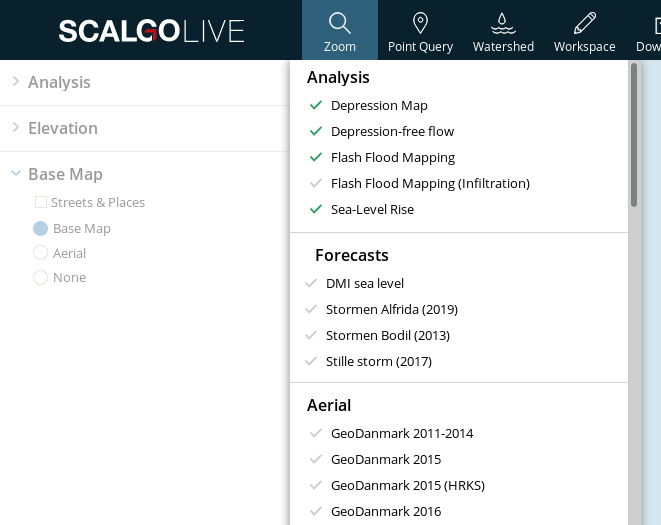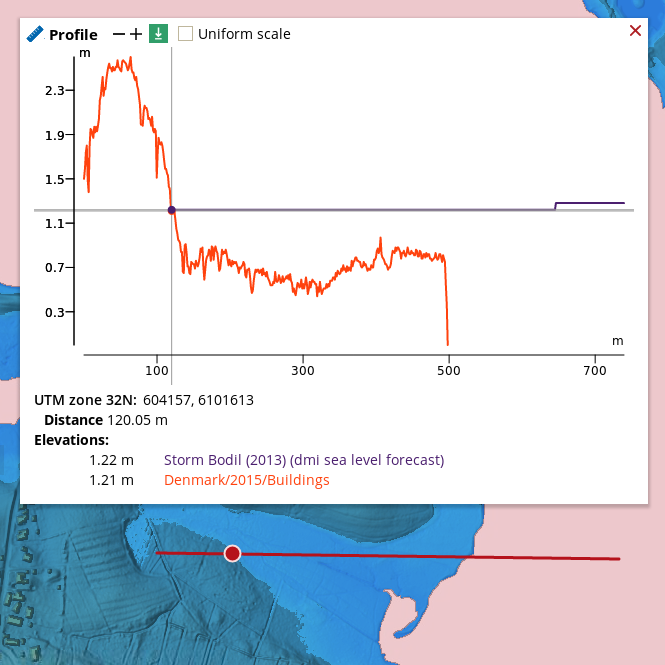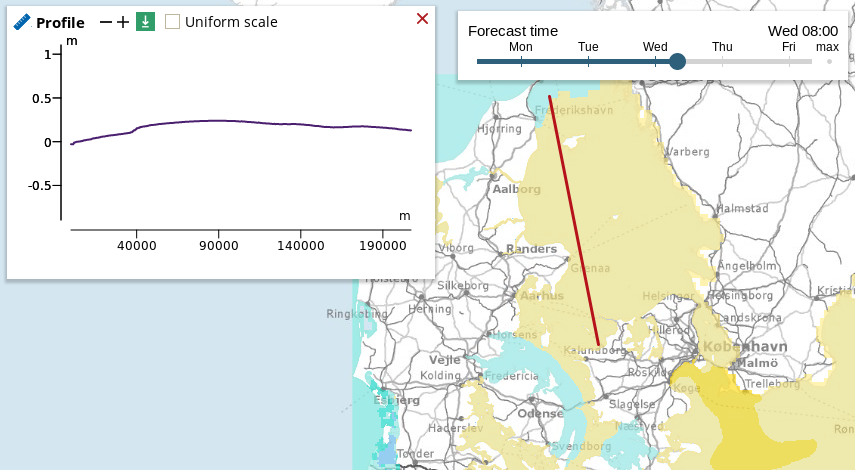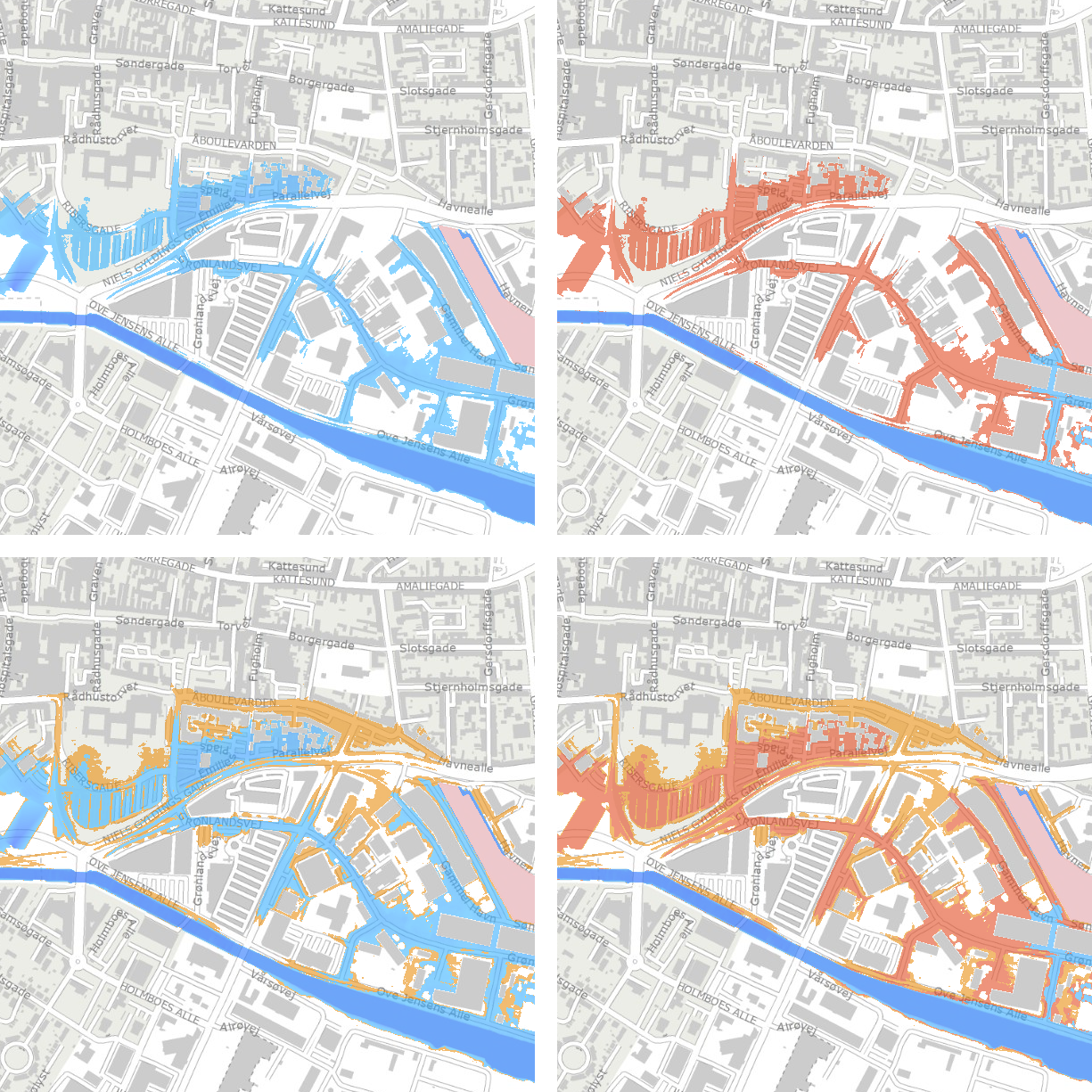-
Documentation
-
About
- Getting Started & Use Cases
- Support
-
What's New
- Simplified tools for designing with contour lines
- DynamicFlood: Organize and understand your computations
- Modelling stormwater networks in Scalgo Live
- National US high-resolution land cover map
- New functionality for CAD users!
- DynamicFlood: Cleaning up rain events and adding historical rains, now available in France
- National Polish high-resolution land cover map
- DynamicFlood now available in Great Britain
- Global contour maps now available
- Updated Swedish topsoil map
- Scalgo Live Global theme is updated with new elevation and land cover data
- Detailed culvert information in DynamicFlood
- No more Lantmäteriet fees for Swedish data
- Depth-dependent surface roughness (Manning) in DynamicFlood
- Detailed land cover map for all of Great Britain
- National French high-resolution land cover map
- Work with multiple features simultaneously in the canvas
- Spill points on flash flood map and depression map
- New surface roughness (Manning) parameters for DynamicFlood
- Workspace and Modelspace sharing updates
- Regionally varying rain in DynamicFlood Sweden
- Veden imeytyminen nyt osana rankkasadeanalyysejä
- Use Scalgo Live anywhere in the world
- DynamicFlood: Live model speed info and regionally-varying rain events
- Sea-level rise: Download building flooding information
- Detailed contour maps and editable buildings in Workspaces
- New in Modelspaces: Explore hydrodynamic simulations and visualise the dynamics of flow velocity
- National German high-resolution land cover map
- Specify basins and protrusions by drawing their outer boundary
- Simplified path features
- National Norwegian high-resolution land cover map
- Organise and communicate on a digital canvas
- New sidebar to help organize your analyses and queries
- Sliding contours
- Ny skyfallsanalys och en ännu bättre marktäckekarta
- New land cover map for Finland
- Depths in the depression map
- New Danish land cover map with more classes
- National Swedish High-Resolution Impervious Surface Mapping
- Watershed tool updated with even better descriptions of catchment characteristics
- National Flash Flood Map with Infiltration and Drainage for Denmark
- Add your own WMS layers to SCALGO Live
- Enriched building data in Denmark
- National hydrological corrections and Land Cover for Poland
- National hydrological corrections for Norway
- Updated Impervious Surface Mapping for Denmark
- National hydrological corrections and updated local data for Finland
- Fast and intuitive tools to work with infiltration and land use
- Improvements to vector imports and exports
- National Danish groundwater model
- New Sweden high-resolution model
- New powerful depression map and more analyses visualization options
- Introducing Modelspaces: Get your hydrodynamic models into SCALGO Live
- Use case videos
- Access a EA flood maps inside SCALGO Live
- Improved map export
- New powerful ways to edit the elevation model
- Better coloring of flooding layers and sea-level depth filtering
- National Danish High-Resolution Impervious Surface Mapping
- National access for local and regional organizations
- Simpler, more powerful downloads
- Customize Layer Transparency
- Hydrological corrections and new data in Sweden
- Improved export functionality
- Access a wide range of authorative data inside SCALGO Live
- Importing VASP data
- Measure gradients, undo edits, and Norway updates
- New terrain edit features, soil balance information and much more...
- Browse historical orthophotos in SCALGO Live
- Emergency planning with sea-level rise from national forecast data
- Detailed information about watershed composition
- Better styling of imported vector layers
- New Danish Elevation Model
- Work with gradients in the profile widget
- Flood risk screening from rivers and flow paths
- New workspace tool: Raise and lower terrain uniformly
- Importing LandXML TINs, LAS point clouds
- New model in Sweden
- Side slopes on workspace features
- Drag and drop enhancements
- Swedish contour maps
- Subsurface basins and sewage drains in workspaces
- New Interface
- Volume information for watersheds and flow paths
- New powerful tool for emergency response and coastal flood prevention
- Denmark: New flash flood map
- Sweden: Geodatasamverkan setting for Swedish users
- Import custom terrain models
- New Hydrological Corrections
- Elevation contours now available
- Download orthophotos as JPEG and PNG
- Subsurface structures in workspace
- Sea-levels in terrain profiles
- Updated orthophotos
- Models and analysis update
- User interface updates
- User interface updates
- GeoDanmark/FOT data, Matrikelkortet now available
- New flash flood map
- Download of risk polygons
- Updated orthophotos
- Nationwide hydrology on the new DHM/2015 model now available
- New flash flood map computation available with watershed download
- DHM/2015 variants and sea-levels now available nationwide
- DHM/2015 now available nationwide
- Hydrology on the new DHM/2015 model now available
- New DHM/2015 Model - now with buildings
- New DHM Model
- Watershed Tool
- Ad hoc layers
- Nationwide contour maps for all countries
- Single Sign-On
- Data Fees
- User Interface
- Canvas
- Analysis
- Workspaces
- Modelspaces
- Working with CAD data
- Core+ DynamicFlood
- Core+ NatureInsight
- Core+ PropertyResilience
- Streams and Flow
- Physical Properties
- Country Specific
-
About
Denmark – DMI Sea-Level Forecast
DMI Sea-Level Forecast allows you to see the current sea-level forecasts from the Danish Meteorological Institute (DMI), and the effect of the forecasted sea-levels on land.
What is the 'DMI sea level' forecast
DMI sea level displays the areas at risk of flooding from high sea level in the coming five days. It is based on the most recent five-day sea level forecast released by DMI, which is updated four times per day on DMI's website. The update is available in Scalgo Live as soon as a new forecast is released.
The sea level is computed by the sea level model of DMI, which runs four times per day to compute the sea level every hour for the next five days (120 hours). The sea level model is fully automatic, and therefore, it can deviate from the sea level alerts released by DMI. The latter is produced by meteorologists who combine the fully automatic sea level model with critical knowledge about current weather and ocean conditions. The sea level model is also available on DMI's website.
To show the effect of the forecasted sea-levels on the terrain, we use a method in broad strokes resembles the regular Sea-Level Rise analysis. This implies that there is no notion of time in the simulation.
How to use the 'DMI sea level' forecast
Go to the library and select DMI sea level. The layer is located in the group named forecasts (see the illustration below).

In the ocean, the forecast is shown with the palette below (in cm).

Slider: Control the event time
By dragging the slider, you choose the point in time for which the forecast is shown.

If you drag the slider all the way to the right, a maximum forecast is shown, which combines the five-day forecast into a single display of the maximum water level over five days. Note that the maximum water level occurs at different times in different parts of the ocean.
Profile tool: Investigate the elevation of water in the sea and on land
As with other Scalgo Live analysis layers, you can use the Profile tool to view the flood risk along a line.

In the same manner, the profile tool can be used to view the DMI forecast along a line in the ocean.

Sensitivity analysis
When using the +10% and -10% checkboxes,
the areas that are within +/-10% of the forecast are highlighted.
When -10% is enabled, a cell on the map is colored red
if it is flooded by the forecast, but would not be flooded if the
forecast values were 10% lower.
When +10% is enabled, a cell on the map is colored orange if it is not flooded by the forecast, but would be flooded if the forecast values were 10% higher.

Workspaces
When you create a Sea-Level Rise workspace in Scalgo Live, the forecast-based analysis is included as part of the workspace computation. In this manner, it is possible to plan mitigations to prevent sea level flooding.
When a new forecast is released by DMI, you need to click run analysis in the workspace to obtain a flood analysis based on the new forecast.
Cases: Historical forecasts
To get a taste of what the forecast-based analysis looks like in event of a storm surge alert, you can enable the historical forecasts in Scalgo Live.
We recommend that you remove the historical forecasts from the dock after using them, to avoid any confusion when the tool is used in an actual storm surge situation.